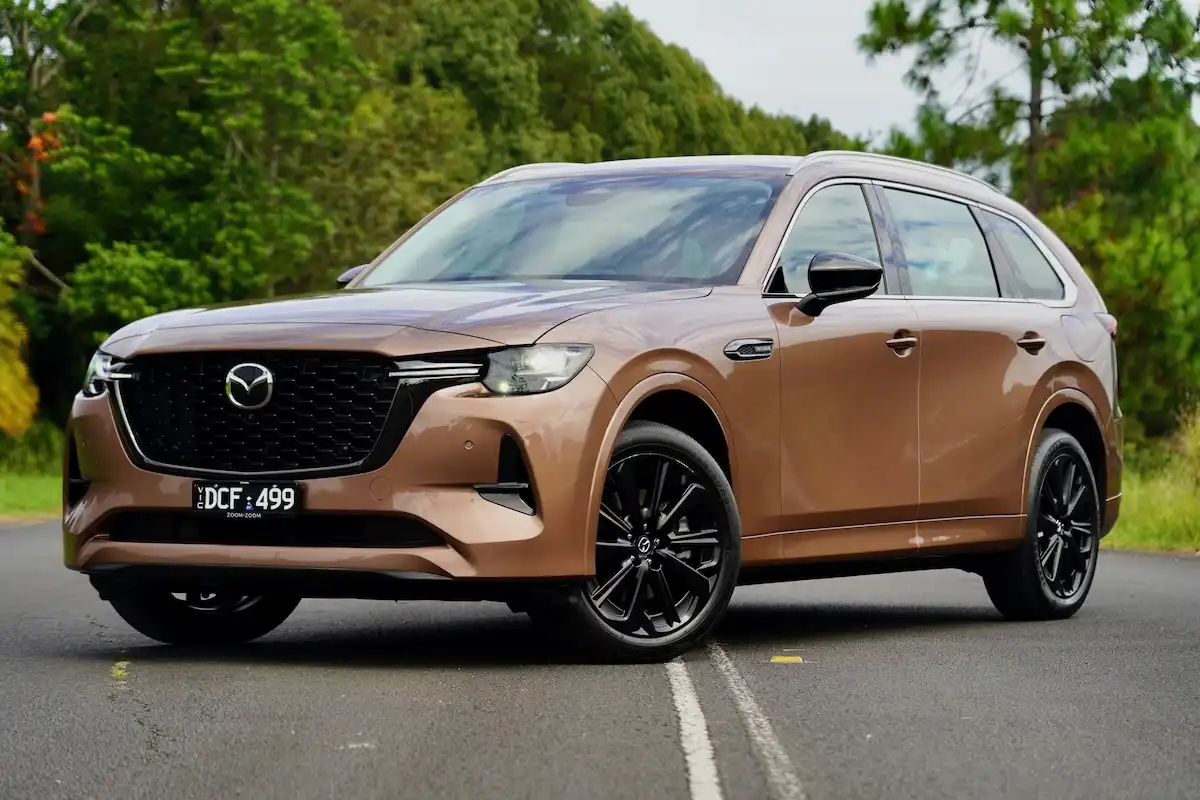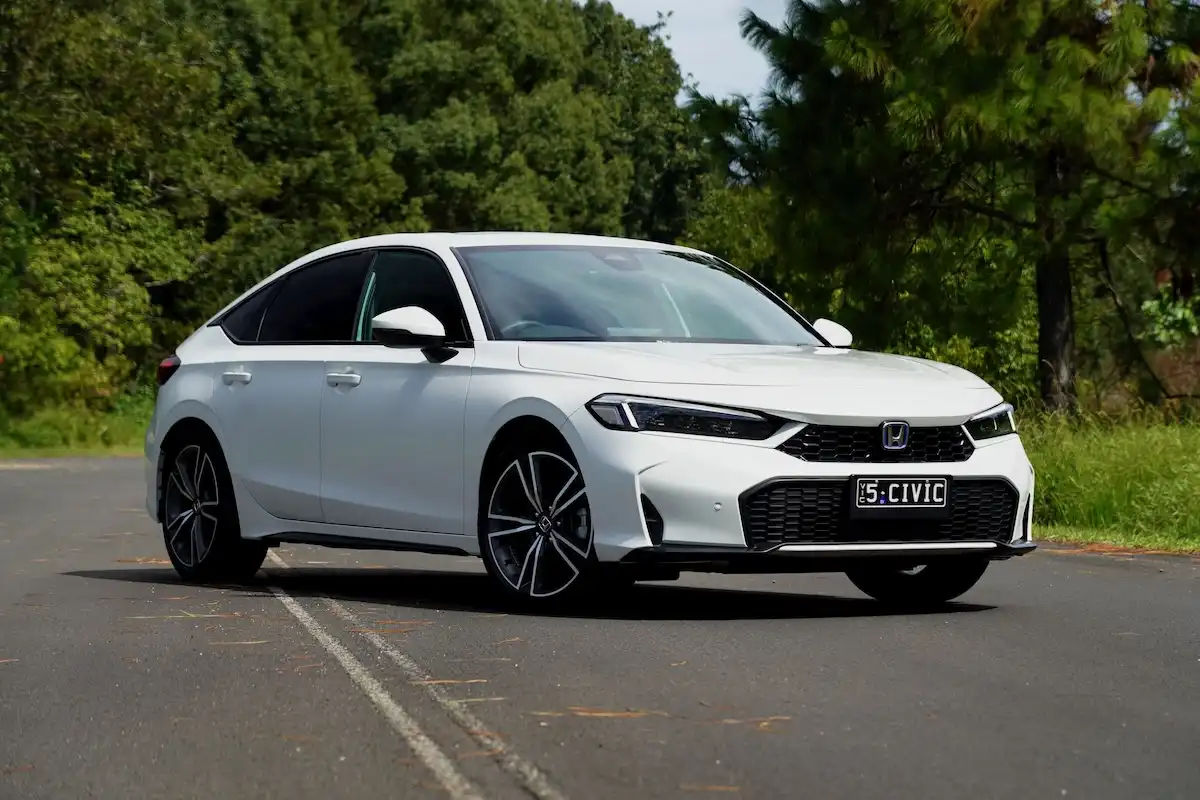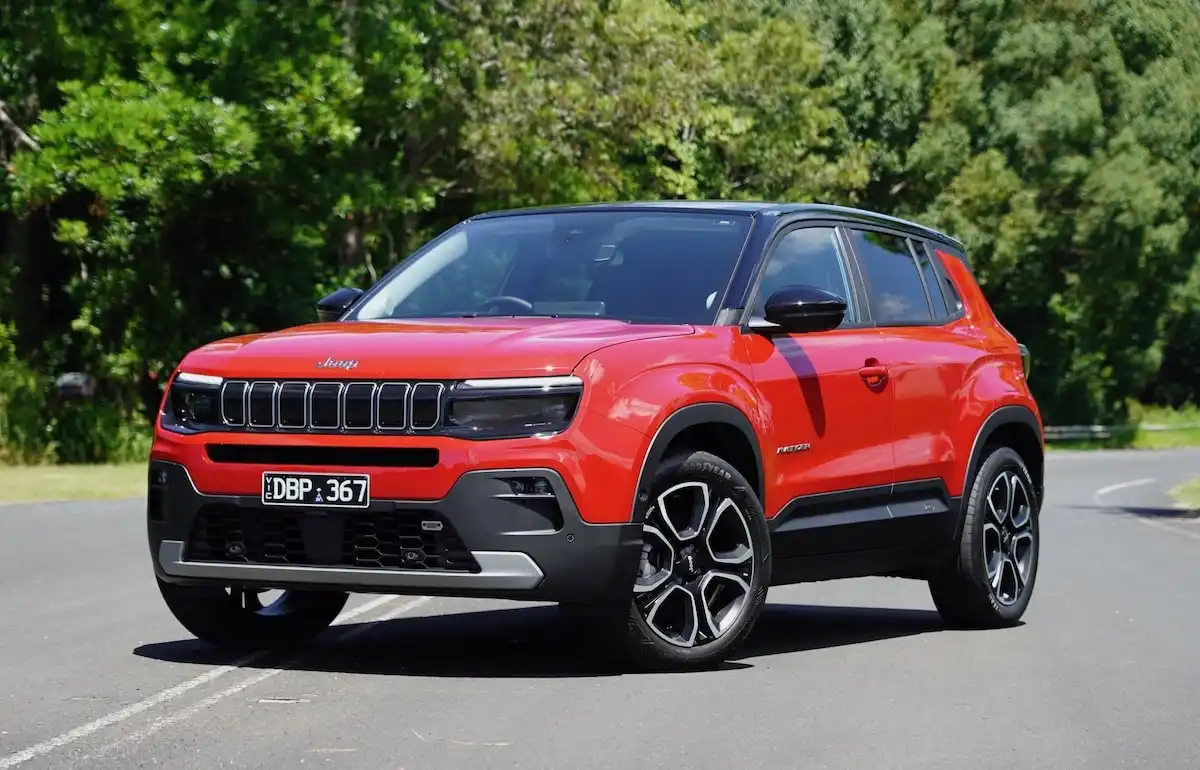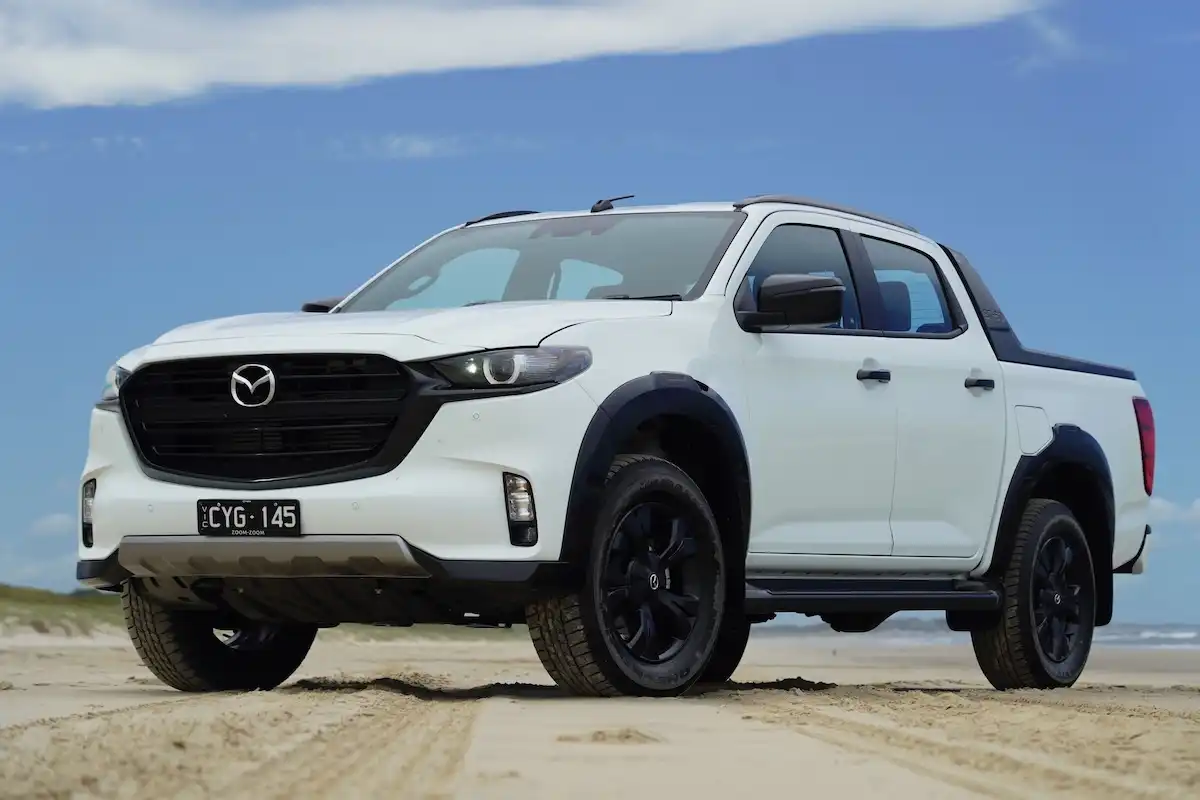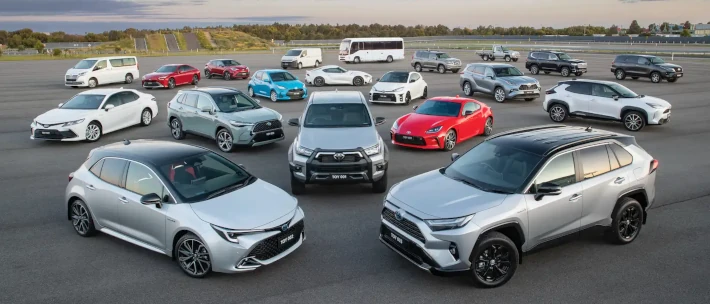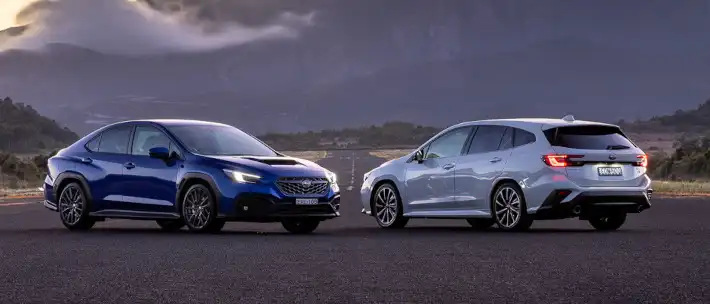Australia’s ute market is the most fiercely contested segment, with automotive heavyweights battling against each other to win over hearts and minds with their latest utes. The good news for the car-buying public is that as a result of this competition, there are more options than ever before, and consumers stand to benefit from higher-quality vehicles, packed with features and extremely competitive one-upmanship when it comes to pricing.
Considering just how tough and competent the Navara has proven in the past, how does the latest generation step up and take the fight to its competitors when it comes to driving comfort, features, ability on the worksite and off-road, as well as safety technology and all-important long-term ownership costs? The bar has been set incredibly high by the Navara’s competition, including the Toyota HiLux, Ford Ranger, Mitsubishi Triton, Mazda BT-50 and the Isuzu D-MAX, so let’s find out how the Navara holds up against its rivals.
Starting Price: $38,300 Drive-away
OnlineAuto Savings: $8,660
Nissan Navara (ST-X LEATHER) Specifications
| Model Date | 2021 |
| Make | NISSAN |
| Model | NAVARA |
| Series | D23 MY21 |
| Variant | ST-X (4x2) LEATHER/NO SUNROOF |
| Body | DUAL CAB P/UP |
| Fuel type | DIESEL |
| Transmission | 7 SP AUTOMATED MANUA |
| Drive | 4x2 |
| Engine | TTCDI |
| Engine capacity | 2298 |
| Engine configuration | DUAL OVERHEAD CAM / 16 valves |
| Engine RPM | 3750 / 1500 |
| Cylinders | DTT4 |
| Torque | 450 |
| KW | 140 |
| Fuel tank size | 80.0 |
| Fuel usage specs | 7.6 / 0.0 |
| CO2 | 200 |
| ANCAP security rating | 5 |
For more details and other variants, check Nissan Navara car page.
Need help narrowing down your choices?
Get in touch with one of our Car Buying Specialists today
Request a quoteHow Much Does It Cost?
The Nissan Navara range kicks off from $32,300 for the entry-level SL variant in a 2x4 single cab configuration with a manual gearbox, with drive-away prices sitting around the $38,000 mark. Opting for an automatic brings the price to $34,800, while a 4x4 is priced at $39,300 for the manual and $41,800 for the 4x4 with an automatic transmission. Buyers looking for a king cab chassis can opt for the SL 4x2 automatic for $38,800, while the 4x4 automatic is priced at $45,800.
The majority of the Navara lineup and trim levels, however, can be found in the dual cab lineup, with prices ranging from $39,600 for the entry-level SL 4x2 manual, and stretching out to $60,630 for the range-topping Navara Pro-4X. Within the dual cab lineup, prices for the mid-range ST-grade start at $47,780, while the ST-X is priced at $51,270 and Pro-4X receives an entry-level price of $55,780. These prices do not include on-road costs, and are subject to change with ABN pricing.
How Much Can OnlineAuto Save You?
Using OnlineAuto’s car purchasing service, you could save $8,660 by sourcing one of our car specialists to help you find the best value model for you.
What Features Does the Nissan Navara Have?
The Nissan Navara lineup comes packing a range of features, with the entry-level SL variant receiving a set of 17-inch steel wheels, automatic halogen headlights, cruise control, fabric upholstery, remote keyless entry, air conditioning, an 8.0-inch infotainment system with Android Auto and Apple CarPlay, four-speaker sound system, 7.0-inch digital instrument cluster, trailer sway control, a rear view camera, autonomous emergency braking, forward collision warning, driver attention monitoring and a full-sized spare tyre. 4x4 variants of the entry-level SL also receive a rear locking differential and a hill descent control system.
Moving to the Navara ST adds a set of 17-inch alloy wheels, LED head and tail lights, daytime running lamps, fog lights and indicators, a stainless steel sports bar, leather-wrapped steering wheel and gear lever, automatic wipers, satellite navigation and DAB+ for the infotainment system, privacy glass, a powered sliding rear window and auto-dimming rear view mirror. Stepping up to the Navara ST-X variant adds a set of larger 18-inch alloys, a polished sports bar, keyless entry and start, a towbar, tub-liner, tie-down hooks in the tray and dual-zone climate control.
Finally, Nissan’s flagship Navara Pro-4X comes with all-terrain tyres wrapping around black 18-inch alloys, a black stainless steel sports bar flanked by black wheel arches, black roof rails, door mirrors, door handles, front grille and side steps, as well as leather Pro-4X seats in the interior.
Range Features:
-
17-inch steel wheels
-
Cruise control
-
Automatic halogen headlights
-
8.0-inch infotainment system with Android Auto and Apple CarPlay
-
Rear view camera
-
Hill descent control (4x4 variants)
-
Rear locking differential (4x4 variants)
-
17-inch alloys (Navara ST)
-
Satellite navigation and DAB+ digital radio (Navara ST)
-
Stainless steel sports bar (Navara ST)
-
LED head and tail lights, indicators and daytime running lamps (Navara ST)
-
18-inch alloys (Navara ST-X)
-
All-terrain tyres (Navara Pro-4X)
-
Black exterior finishes and sports bar (Navara Pro-4X)
Nissan Navara Colours
| Solid White | White Pearl |
| Twilight Grey | Brilliant Silver |
| Black Star | Forged Copper |
| Burning Red |
Is it Comfortable to Drive?
Typically, utes find their strength when the going gets tough, and are relatively unimpressive when driving in everyday situations and commuting. The Navara does a great job in showing that this doesn’t necessarily have to be true, providing an impressive ride quality and smooth driving dynamic. The Navara range does, however, offer two different engines, so if you’re looking for the variant with the most grunt on offer, you’d be best served upgrading from the entry-level model. The base Navara SL is powered by a turbocharged 2.3-litre four-cylinder diesel unit, which throws out 120kW and 403Nm of torque, while the rest of the range receives an additional turbocharger that brings the power output to 140kW/450Nm.
Power is thrown to the wheels via a six-speed manual or seven-speed automatic transmission that also receives a torque converter, making for silky-smooth shifts. In terms of the Navara’s power output compared to competitors, it sits right in the middle of the race, with a more powerful engine than the Mitsubishi Triton and Mazda BT-50, but less powerful than its main competitors, the higher-spec Toyota HiLux and Ranger variants.
On the road, this turbo-diesel gets to work with a smooth, relentless push off the line, translating to fairly impressive acceleration for a vehicle of this size. More importantly, though, is the suspension system hiding underneath, which soaks up the bumps that frequent Australian roads without a problem. The suspension also works away minimising just how much body roll you’ll feel like pushing into a corner, and works well at offering a stable, comfortable and confidence-inspiring ride. Combined with a more intensive approach in tackling noise and vibrations through the cabin over the previous model, the latest Nissan Navara is by far the most refined and capable ute from the company yet, and narrows any previous gap that previously existed with its competitors.
Is the Nissan Navara a Suitable Workhorse?
Commuter-focussed Navara variants receive a coil spring suspension setup, while the more rugged variants receive a leaf spring setup. Coil spring suspension offers a more accommodating ride quality, while the leaf spring setup is more capable of handling big, heavy loads for the worksite and while towing large objects. Officially, the Navara range has a braked towing capacity rated at 3,500kg across all variants, and an unbraked capacity of 750kg, which means the Navara keeps up with the competition in this vital area. GVM stands at 3,150kg for the dual cab Navara, translating to around 2,700kg of towing capacity while fully-loaded, with a payload capacity rated at between 1,100-1,300kg, depending on your variant.
In terms of size the single cab measures in at 5,120mm long, 1,850mm wide and 1,770mm of depth, while the king cab measures in at 5,260mm, 1,8850mm and 1,815mm respectively. Finally, the Navara dual cab comes in at 5,311mm long, 1,875mm wide and 1,855mm tall, and has a tray that measures in at 1,509mm in length, 1,134mm wide and is 519mm deep, while the king cab’s tray is 1,851mm long. The Navara also receives a locking rear differential for added traction on loose surfaces, and a trailer-sway system to help with stability while towing large objects.
Is the Nissan Navara Practical and Spacious?
While the exterior of the Nissan Navara received some significant improvements with the latest generation, the company has seemingly paid less attention to the interior. The major updates you’ll find inside come in the form of a new steering wheel and updated infotainment system that now offers Apple CarPlay and Android Auto support.
Regardless, the Navara’s interior design remains utilitarian and user-friendly, offering a heap of room for the driver and front passenger. Practical touches include large door bins, a large central storage area and small smartphone stash in front of the gear lever, and combine in a relatively straight-forward but perfectly acceptable cabin design when compared to its competitors. More expensive variants get some special touches and leather inside, making the cabin more sophisticated, welcoming and comfortable for longer journeys.
In dual cab form, the Navara offers a spacious cabin for those seated behind the driver, with more than enough room for even adults to get comfortable on longer trips. Typically, dual cab utes offer little in the way of rear occupant space and comfort, but this is a particularly strong-point of the Navara. For the parents out there, the ISOFIX anchor and top tether points are easy to find, and installation is a simple process thanks to easy access to the rear bench seat. All up, then, the Navara’s cabin design matches what’s on offer inside the rest of its competitors, providing owners with a utilitarian and practical cabin, with some genuinely nice touches in higher trim levels.
Is the Nissan Navara Safe?
The Nissan Navara is a safe ute, but it’s worth noting that entry-level variants don’t receive the full raft of safety equipment that some of its competitors are packaged with. The Navara received a five star safety rating from ANCAP back in 2015, where it scored 35.01 out of a potential 37 for overall safety. The latest generation Navara range receives seven airbags as standard, with entry-level variants being packaged with autonomous emergency braking, driver attention warnings, and forward collision warnings.
Higher-spec variants, however, receive the full-raft of active safety technologies, meaning that the base models are, unfortunately, left in the dark. Opting for the Navara ST and above adds a surround-view camera, lane-keep assistance and departure warnings, rear cross-traffic alerts, blind-spot monitoring and rear-mounted parking sensors.
Is it Fuel Efficient?
Fuel economy for the Navara range varies depending on which variant you opt for, due to the fact that there’s two different engines in the lineup. The most economical engine is packaged into the base SL variant, which returns a combined cycle figure of 7.2L per 100km, while more powerful variant return figures, on average, of 8.1L per 100km. Compared to its rivals, the Navara range is relatively economical, bettering the baseline figures of the Toyota HiLux and Isuzu D-MAX and the Ford Ranger. Real-world driving will likely see these figures rise to well-above the manufacturer’s claims, though.
Our Verdict: Is the Nissan Navara Worth it?
While the Nissan Navara has been built tough enough to handle the worst that Australians can throw at it, the package as a whole provides a surprisingly refined and competent package when compared to some of its competitors in the ute segment. It doesn’t trail behind any of its competitors, but the Navara doesn’t really lead the pack, either. Regardless, Nissan has proved that the Navara is highly-capable, powerful and surprisingly well-equipped for the segment, and for this reason, deserves a spot on your shortlist of utes that tick the boxes of being a workhorse, while being able to run around town in comfort.
While Nissan’s introduction of the base-model SL variant provides a new entry-point into the Navara lineup, it’s worth pointing out that it is still considerably more expensive than the entry-level Toyota HiLux and Isuzu D-MAX. With this in mind, mid-range variants make more sense as a value-for-money proposition, largely thanks to the added features. On that note, if you’re in the market for a new car, you can get a free quote and see how much OnlineAuto can save you on your next car, or call us on 1300 719 925
Five Specs You Need to Know
-
Five-year, unlimited KM warranty
-
3,500kg braked towing capacity; 750kg unbraked
-
1,282kg payload capacity
-
Single and twin-turbo diesel engines available
-
12-month/20,000km service intervals
Pros
-
Quiet, refined ride quality
-
Refreshed styling package
-
Towing capacity matches key rivals
-
Long service intervals
Cons
-
Key safety tech reserved for mid-range variants and above
-
Uninspiring interior design
-
More expensive than other entry-level utes
Nissan Navara Competition
Nissan Navara |
VS |
Isuzu D-Max |
| Toyota HiLux | ||
| Ford Ranger | ||
| Mitsubishi Triton | ||
| Mazda BT-50 | ||
| Ram 1500 |

